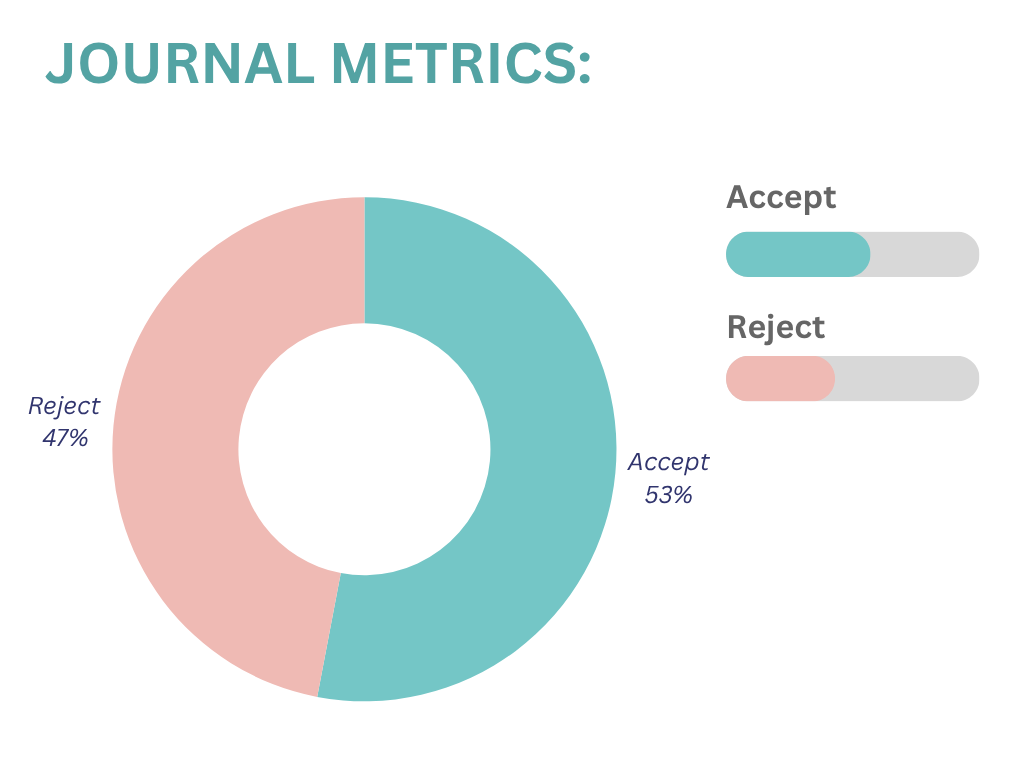A decision-making approach of fuzzy cognitive maps using triangular fuzzy numbers under uncertainty
Abstract
Mathematics is effective in everyday life and every period of human civilization. Advancements in science and technology still depend on Mathematics. No branch of knowledge is untouched by mathematics-economics, defence, space science, and recent nanotechnology. Mathematical logic has been used to analyze and solve problems in science and technology and fields such as political, social, economic, and psychological problems. A fuzzy set can be defined mathematically by assigning a value representing its grade of membership in the fuzzy set to each possible individual in the universe of discourse. This paper aims for an interlinking approach of Fuzzy Cognitive Maps (FCM) to find the problems faced by Transgenders using triangular fuzzy numbers. Section one begins with an introduction, some basic definitions, and previous research for FCM and triangular fuzzy numbers. Section two provides the Mathematical formulation and arithmetic operation of FCM of triangular fuzzy numbers. Section three illustrates the ranking analysis of problems faced by Transgenders using FCM using triangular fuzzy numbers and performs the calculations using the collected data among the Transgenders. Section four describes the Conclusion and some suggestions based on our study.
Keywords:
Unsupervised transgender, Fuzzy sets, Fuzzy cognitive maps, Combined fuzzy cognitive maps, Hidden patterns, Triangular fuzzy numbers, Decision making and optimizationReferences
- [1] Vasantha Kandasamy, W. B., & Uma, S. (2000). Combined fuzzy cognitive map of socio-economic model. Applied science periodical, 2, 25–27.
- [2] Saraswathi, A. (2019). A fuzzy-trapezoidal DEMATEL approach method for solving decision making problems under uncertainty. AIP conference proceedings (Vol. 2112, No. 1). AIP Publishing. https://doi.org/10.1063/1.5112261
- [3] Dharmaraj, B., & Appasamy, S. (2023). Application of a modified gauss elimination technique for separable fuzzy nonlinear programming problems. Mathematical modelling of engineering problems, 10(4). https://doi.org/10.18280/mmep.100445
- [4] Kannan, V., Appasamy, S., & Kandasamy, G. (2022). Comparative study of fuzzy floyd warshall algorithm and the fuzzy rectangular algorithm to find the shortest path. AIP conference proceedings (Vol. 2516, No. 1). AIP Publishing. https://doi.org/10.1063/5.0110337
- [5] Broumi, S., & others. (2024). An efficient approach for solving time-dependent shortest path problem under fermatean neutrosophic environment. Neutrosophic sets and systems, 63(1), 6. https://digitalrepository.unm.edu/cgi/viewcontent.cgi?article=2562&context=nss_journal
- [6] Vidhya, K., & Saraswathi, A. (2023). A novel method for finding the shortest path with two objectives under trapezoidal intuitionistic fuzzy arc costs. International journal of analysis and applications, 21, 121. https://etamaths.com/index.php/ijaa/article/download/2993/891
- [7] Prakash, Y., & Appasamy, S. (2023). Optimal solution for fully spherical fuzzy linear programming problem. Mathematical modelling of engineering problems, 10(5), 1611–1618. https://doi.org/10.18280/mmep.100511
- [8] Vidhya, K., & Saraswathi, A. (2023). An improved A∗ search algorithm for the shortest path under interval-valued pythagorean fuzzy environment. Granular computing, 8(2), 241–251. https://doi.org/10.1007/s41066-022-00326-1
- [9] Saraswathi, A., & Mahalakshmi, S. (2024). A new approach for solving the minimal flow, shortest route, maximal flow and the critical path using network. International journal of system design and information processing, 12(2), 263–276. file:///E:/%D8%AF%D8%A7%D9%86%D9%84%D9%88%D8%AF/CriticalPathShortestrouteusingNetwork.pdf
- [10] Li, Y., Qi, J., Chu, X., & Mu, W. (2023). Customer segmentation using K-means clustering and the hybrid particle swarm optimization algorithm. The computer journal, 66(4), 941-962. https://doi.org/10.1093/comjnl/bxab206
- [11] Prakash, Y., & Appasamy, S. (2024). A novel approach for multi-objective linear programming model under spherical fuzzy environment and its application. Journal of intelligent & fuzzy systems, (Preprint), 1–22. https://doi.org/10.3233/JIFS-233441
- [12] Karthick, S., Saraswathi, A., & Baranidharan, B. (2024). Neutrosophic linear fractional programming problem using denominator objective restriction method. Dynamics of continuous, discrete and impulsive systems series b: applications and algorithms, 31(2), 89–101. https://B2n.ir/x35178
- [13] Anand, M. C. J., & Devadoss, A. V. (2013). Using new triangular fuzzy cognitive maps (TrFCM) to analyze causes of divorce in family. International journal of communications and networking systems, 2, 205–213. https://citeseerx.ist.psu.edu
- [14] Gani, A. N., & Assarudeen, S. N. M. (2012). A new operation on triangular fuzzy number for solving fuzzy linear programming problem. Applied mathematical sciences, 6(11), 525–532. https://B2n.ir/hr7631
- [15] Chen, S. J., & Chen, S. M. (2007). Fuzzy risk analysis based on the ranking of generalized trapezoidal fuzzy numbers. Applied intelligence, 26, 1–11. https://doi.org/10.1007/s10489-006-0003-5
- [16] Saraswathi, A., & Nedumaran, P. (2024). Comparative study to find the critical path using triangular fuzzy number. Journal of computational analysis and applications (JOCAAA), 33(05), 345–354. http://www.eudoxuspress.com/index.php/pub/article/view/518
- [17] Zadeh, L. A. (1965). Fuzzy sets and fuzzy cognitive maps. Information and control, 8(3), 338–353. https://doi.org/10.1016/S0019-9958(65)90241-X
- [18] Kosko, B. (1986). Fuzzy cognitive maps. International journal of man-machine studies, 24(1), 65–75. https://doi.org/10.1016/S0020-7373(86)80040-2
- [19] Dickerson, J. A., & Kosko, B. (1996). Virtual worlds as fuzzy dynamical systems. Technology for multimedia, 567-603. https://sipi.usc.edu/~kosko/Virtual_Worlds_FCM.pdf


